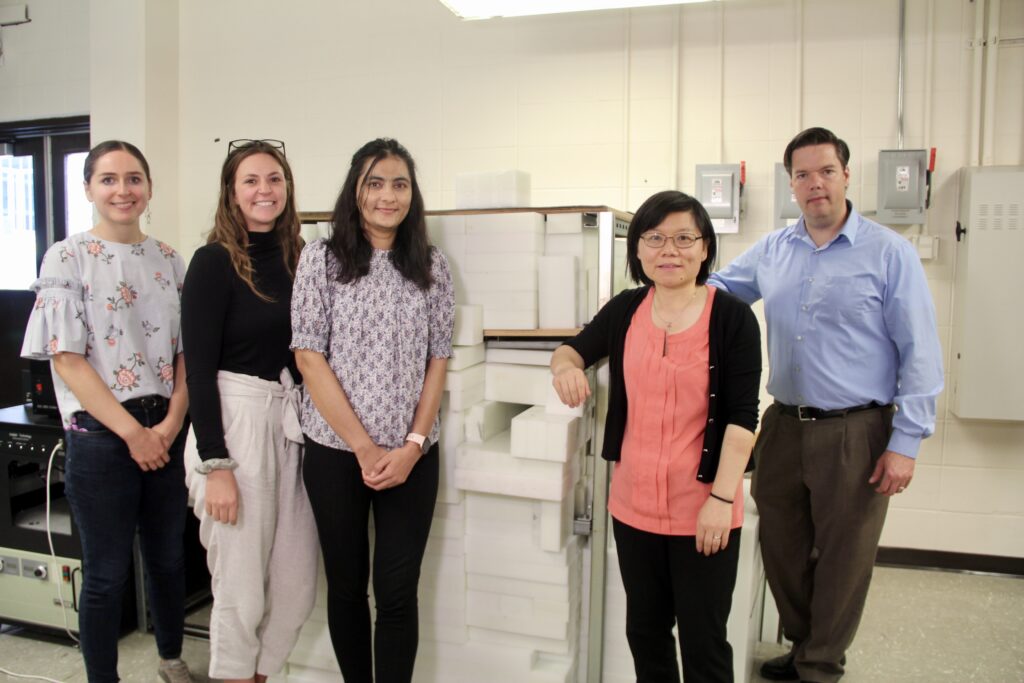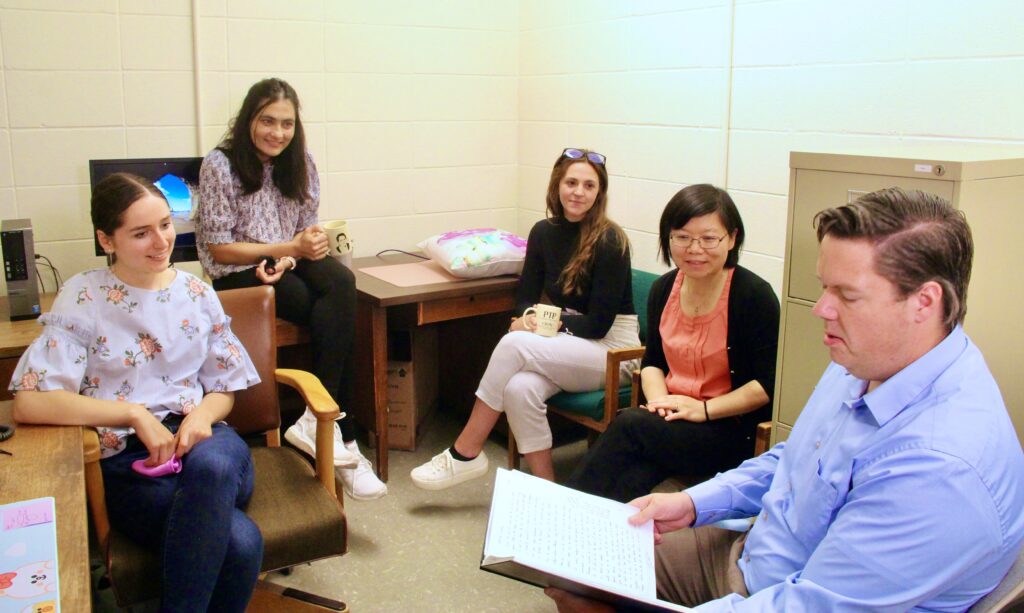Lab Culture: Linda Nie Lab
By Tim Brouk, tbrouk@purdue.edu
Linda Nie, professor in the Purdue University School of Health Sciences, has developed multiple ways of measuring metallic levels and the effects of metals in humans and animals. One of these methods may prompt you to get a pedicure. Nie and her graduate students utilize a handheld X-ray tube analyzer to scan toenails of humans who may have been exposed to toxic metals. The detector is handy in workplace settings where dangerous metals could be absorbed into the body over time.
“It’s easy to bring it to the people on-site,” Nie said. “Toenails are scanned to best pick up mercury and manganese.”
However, a broader way to detect toxic metal exposure centers on subjects’ bones. Either in the lab or out in the field, Nie utilizes two avenues of analysis: x-ray fluorescence — measuring photons emitted back from the bone — and neutron activation analysis. Nie has two x-ray fluorescence bone lead measurement systems which can measure lead in the tibia and patella bones with very high precision. Her lab also has two neutron generators to bombard subjects’ hands with particles that cause metals in the body to form radioactive isotopes. The concentrations of the isotopes from the metals are then measured. The subject sits at the machine, safe-guarded by materials like paraffin or polyethylene to concentrate the neutrons to the hand that is resting in an “irradiation tunnel” close to the machine.
Nie’s lab also boasts two high purity germanium radiation detectors, which also reveals precise levels of metals found in the subject. This machine is surrounded by dozens of 26-pound lead bricks to shield the background signals from radiation in the surrounding environment, such as in the air, while the human participant holds their hand close to the detector. The machine must be kept at a cool -150 degrees Fahrenheit to work. This safe, effective methodology ensures the most precise measurements.
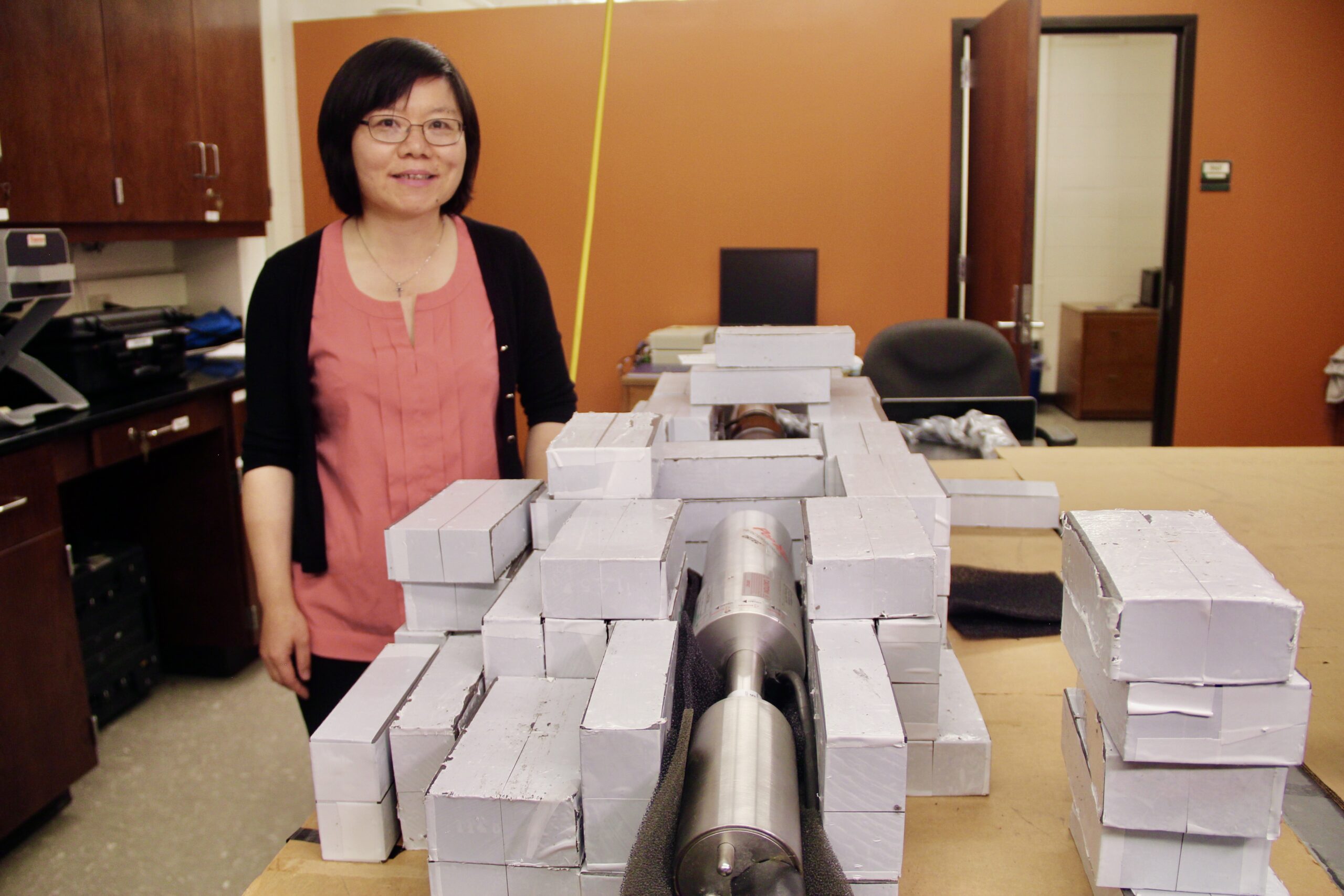
Linda Nie, professor of health sciences, stands next to one of her high purity germanium radiation detectors, which reveal precise levels of metals found in the subject.Tim Brouk
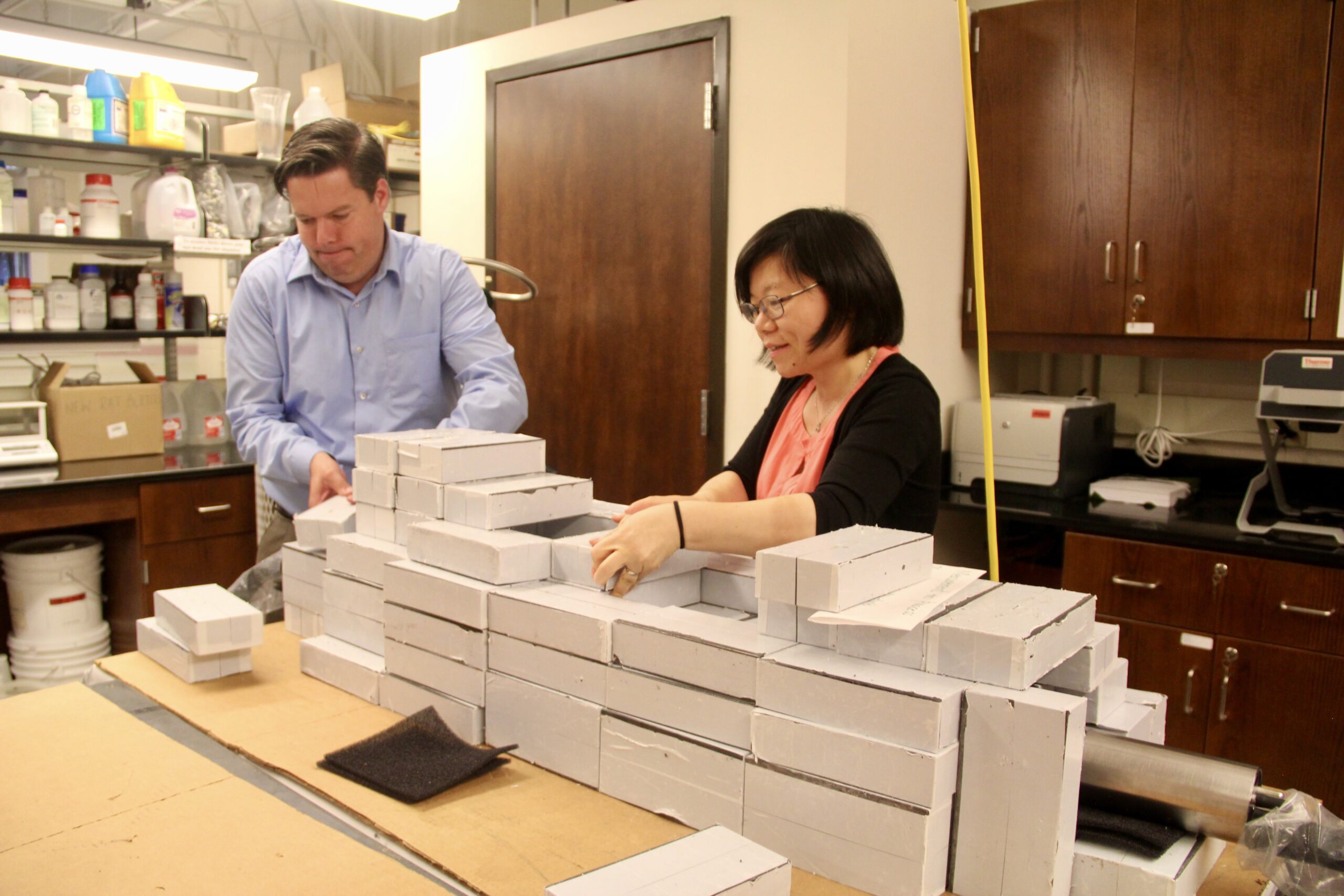
Nie and doctoral student Patrick Byrne, left, move the heavy lead brick that help block unneeded particles when conducting their experiments.Tim Brouk
Good metals, bad metals
The human body does benefit from some metals — at proper levels. Zinc, iron, sodium and other essential metals help with proper metabolism, red blood cell formation, heart function and much more.
“Metals actually play quite an important role in our lives,” Nie said. “Our bodies consist of different types of metals, but toxic metals have adverse health effects to our bodies.”
Lead is the most common dangerous metal to humans. From old housepaint to decaying water pipes, the toxic metal has been doing harm to humans for centuries. Health sciences doctoral student Alexis Webb’s research looks at how lead affects humans neurologically.
“There is no biological need for lead, but somehow, we all have it in us,” she said. “We are interested in seeing what role lead plays in diseases such as Alzheimer’s disease. We use our technology to look at mouse brains to see where the lead is and what it is doing to other metals as compared to control samples.”
Manganese is another danger metal. Yes, it’s essential in human function — helping the body form connective tissues and bones, blood sugar regulation and carbohydrate metabolism. But when manganese levels are too high from outside exposures, the body can react with tremors, difficulty walking and facial muscle spasms.
‘Fascinating for me’
Nie’s students have found scientific passions in the field of metal exposures and the projects within the lab.
“It combines physics. It combines health. It can be very beneficial to humans,” said Patrick Byrne, a doctoral student in health sciences. “It has everything you might want.”
While the analysis and processes are quite complex when detecting levels of metals in humans, health sciences doctoral student Sana Tabbassum said learning to use neutron generators and radiation detectors has been a thrill.
“Neutrons are not that commonly used for the applications in human beings. This was one of the novel techniques I’ve wanted to work on,” Tabbassum explained. “Just imagine, with one 10-minute scan, you can get information about so many metals and elements which are not possible with any other technique. This is pretty fascinating for me.”
Getting the (needle) point
In between experiments, Nie and her students enjoy relaxing and connecting in a couple office areas adjacent to the Nie Lab. Over coffee, they catch up on their work but also their lives outside of the lab. Before the COVID-19 pandemic, they would go out to dinners and further bond as colleagues and pursuers of human health improvement.
During her semesters in the lab, health sciences master’s student Liz Jaye has run computer simulations of the neutron generator scans, which better informs the physical experiments with human subjects. During her work, she combined her love for science with a new, pandemic passion in needlepoint cross stitch embroidery. Prominently displayed on her office desk, Jaye created a bright, happy atom via needle and thread with hearts representing the electrons, protons and neutrons.
“I guess it could represent helium since it has the two electrons there,” said Jaye, whose research emphasis is medical physics after earning an undergraduate degree in nuclear engineering. “I’ve always been working with things on the atomic scale, so merging my hobbies and my academic interests was nice and to have something fun on my desk that reminds me what I’m doing.”
While Nie and her students are from all over the globe, they share a passion for improving and saving people’s lives through science.
“There are many things that can keep you hooked with this lab for so long,” Tabbassum said.
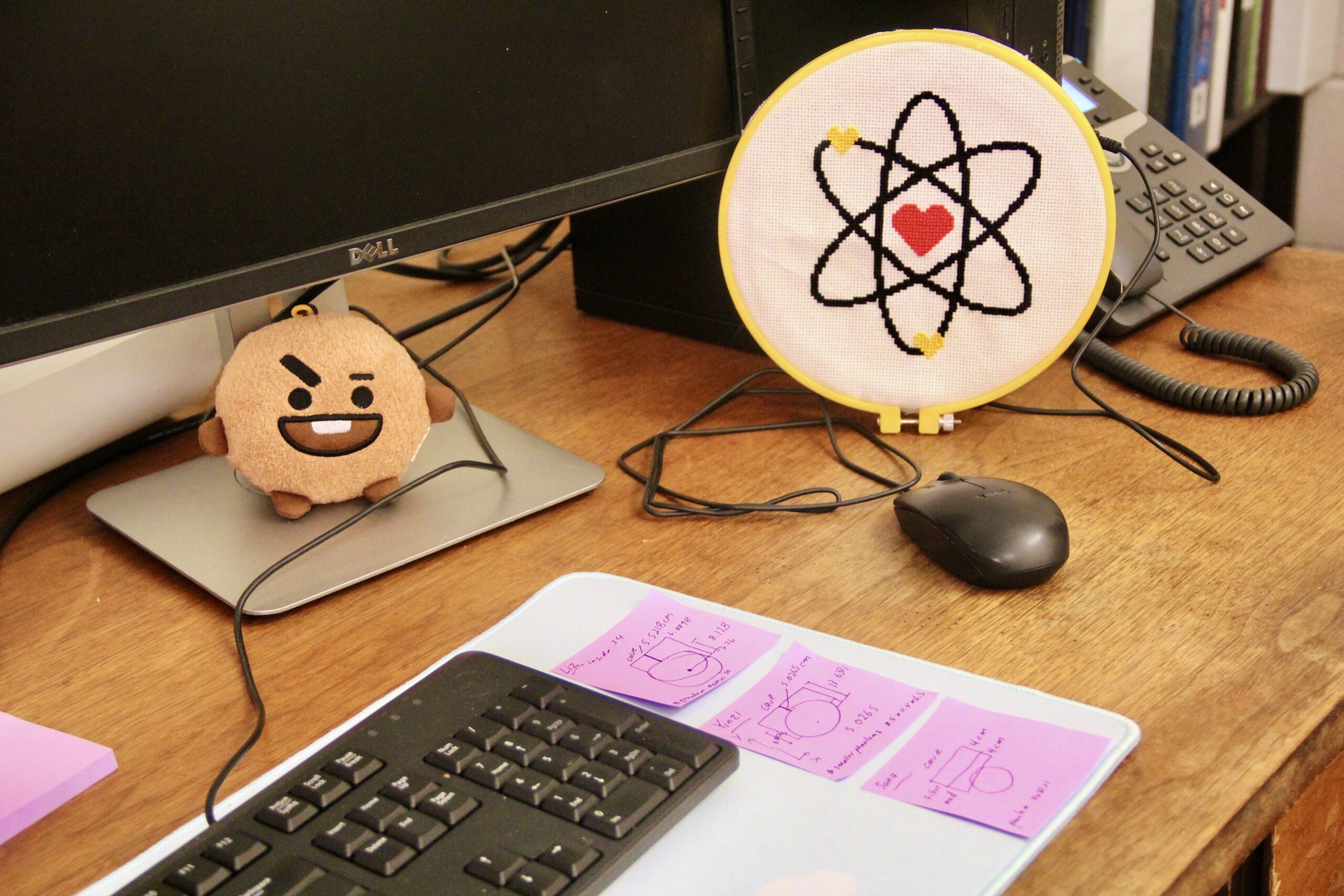
Graduate student Liz Jaye’s desk features some notes, a plush toy and a needlepoint she recently made that features an atomic model.Tim Brouk
Lab Culture explores the people, research and traditions of the laboratories and facilities that help the Purdue College of Health and Human Sciences discover solutions to make lives better.
